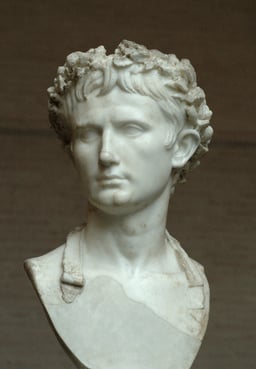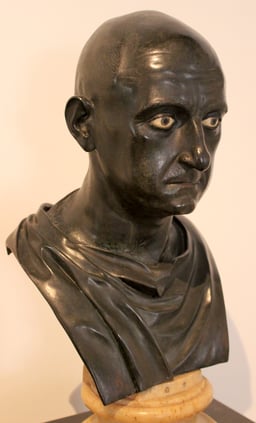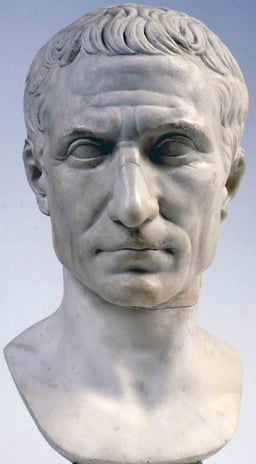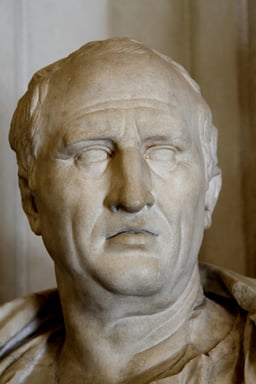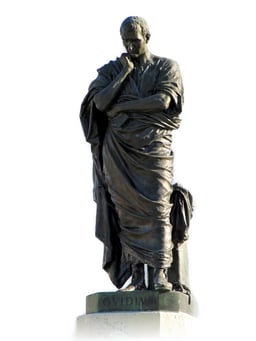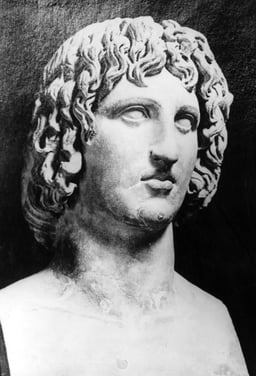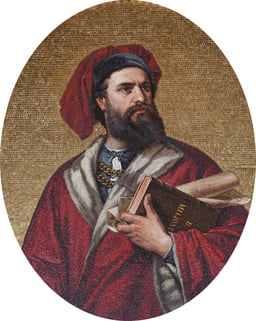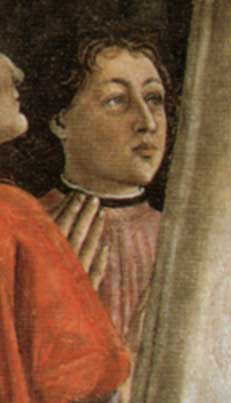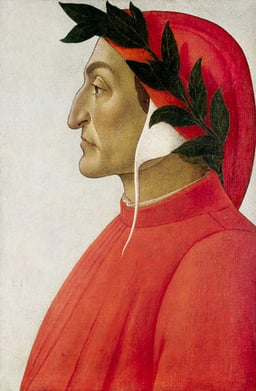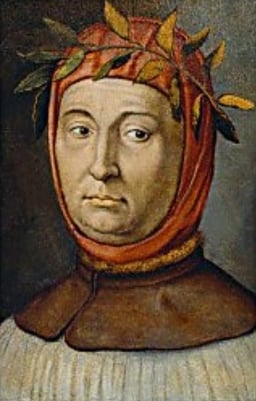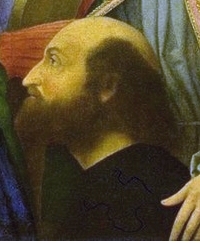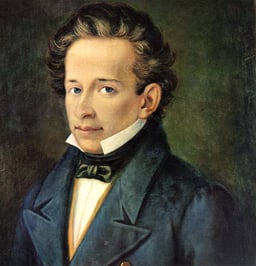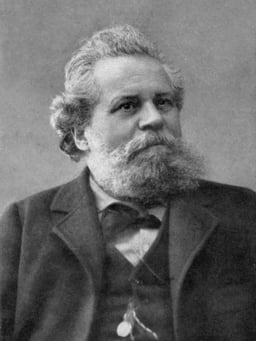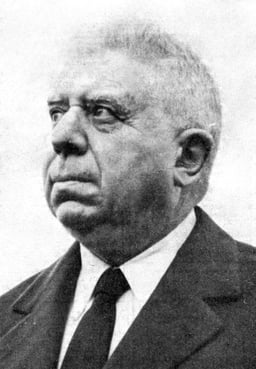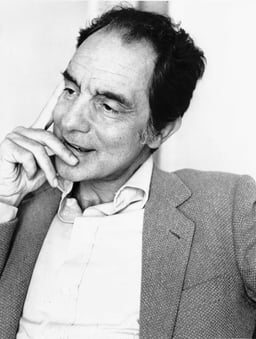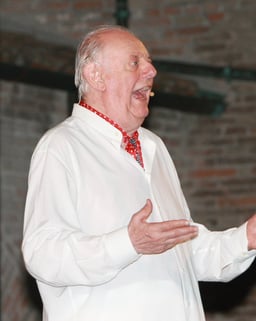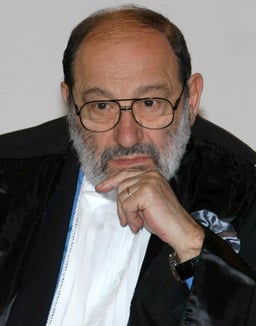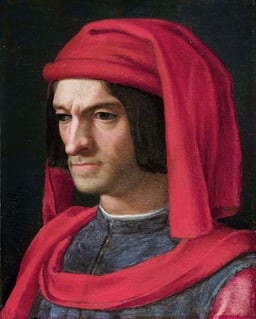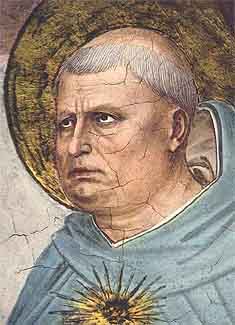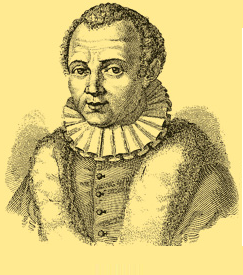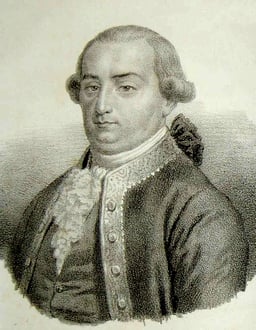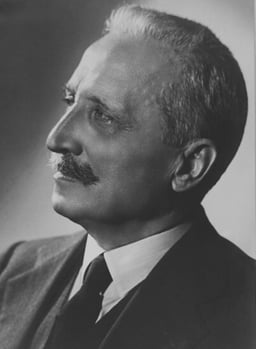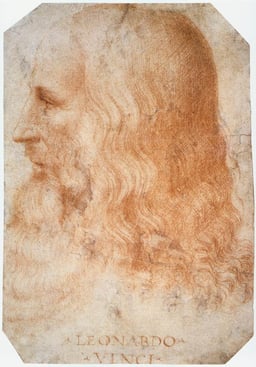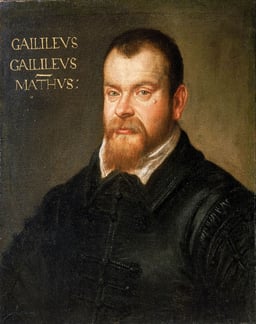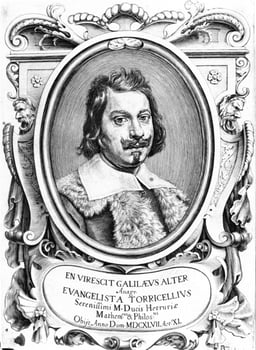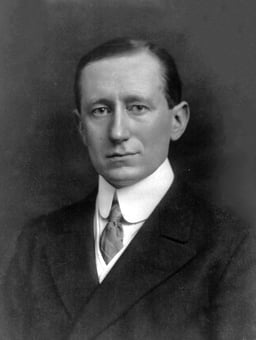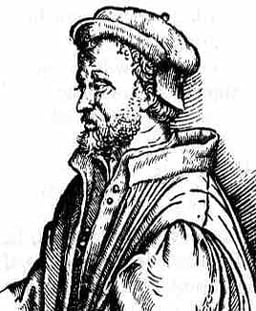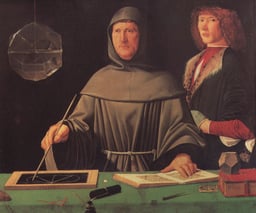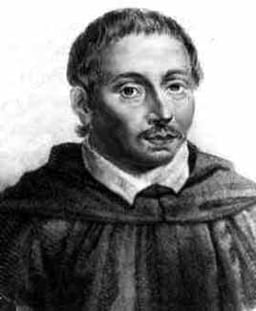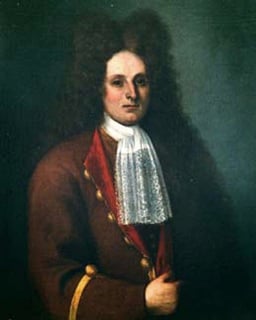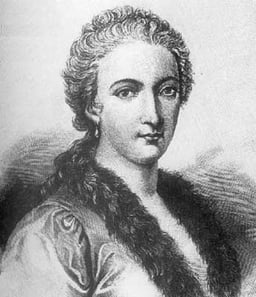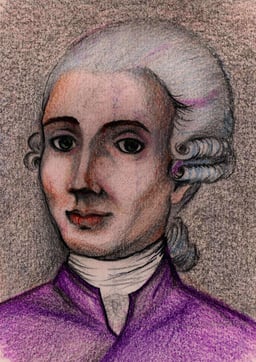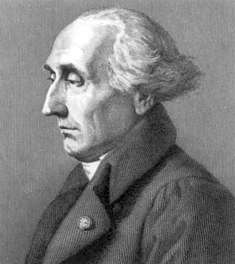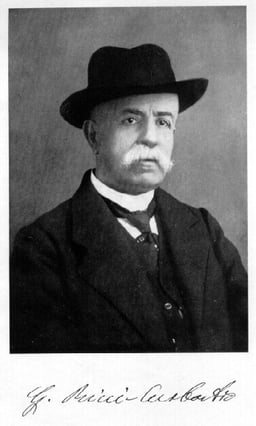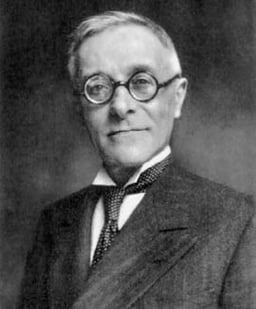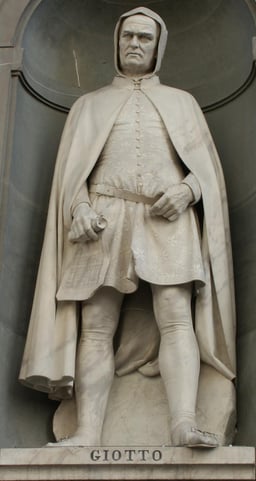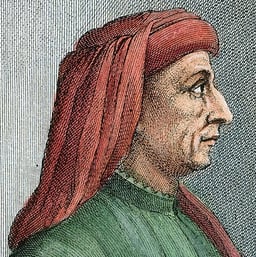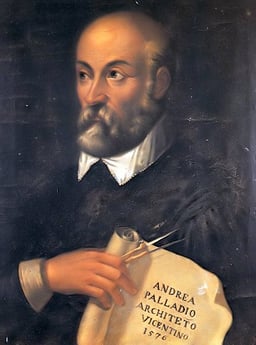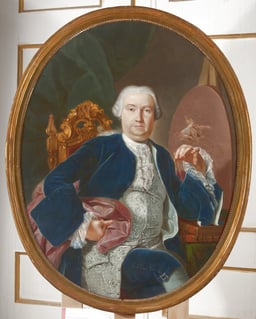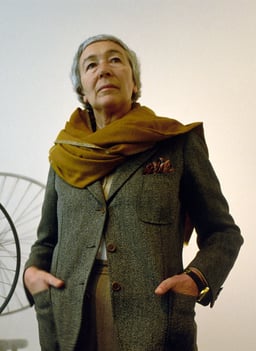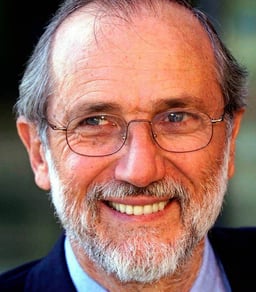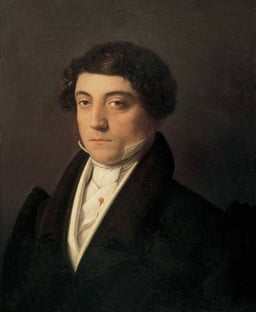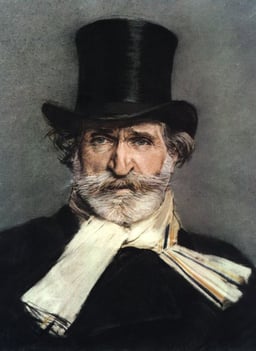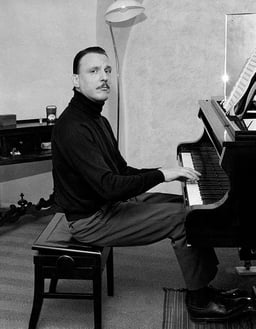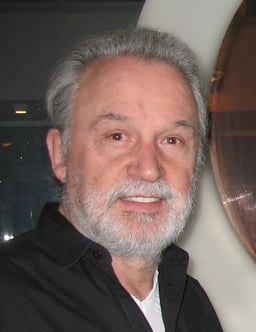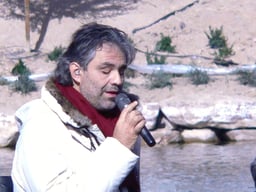Italians
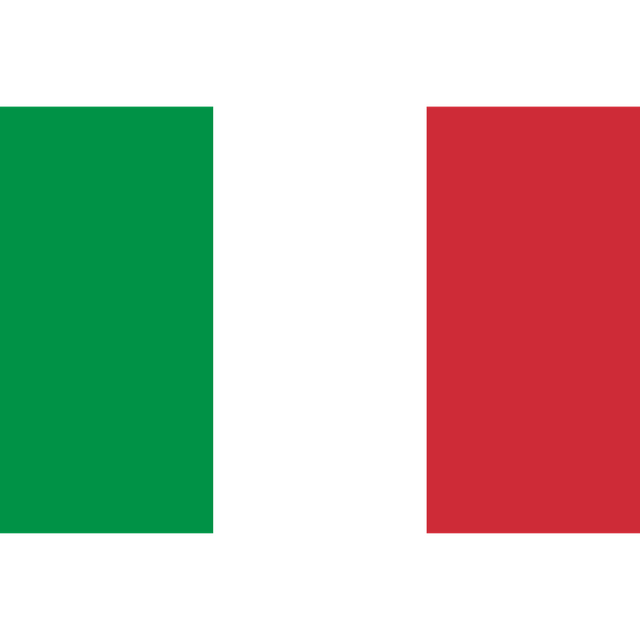
Italians

| Total population | |
|---|---|
| c. 135 million Italy: 55,551,000[1] Italian ancestry:c. 80,000,000[2] | |
| Regions with significant populations | |
| 31,000,000(includes ancestry)[3] | |
| 25,000,000(includes ancestry)[4] | |
| 17,300,000(includes ancestry)[5] | |
| 1,736,766(includes ancestry)[6] | |
| 1,587,970(includes ancestry)[7] | |
| 1,580,000(includes ancestry)[8] | |
| 1,530,563(includes ancestry)[4] | |
| 1,055,220(includes ancestry)[4] | |
| 1,000,006(includes ancestry)[9] | |
| 969,000[10] | |
| 451,825[11] | |
| 195,332[12] | |
| 187,993[13] | |
| 184,997[4] | |
| 130,000[14] | |
| 85,000[15] | |
| 77,400[4] | |
| 53,649[16] | |
| 33,400[17] | |
| 29,287[18] | |
| 21,714[19] | |
| 20,000–50,000[20] | |
| 19,636[21] | |
| 19,000[22] | |
| 18,862[23] | |
| 3,795[24] | |
| 3,503[25] | |
| 3,203[26] | |
| 3,064[27] | |
| Languages | |
| Italian and other Languages of Italy | |
| Religion | |
| Christianity: Roman Catholicism (predominantly)[28] | |
| Related ethnic groups | |
| other Romance peoples and Mediterranean peoples | |
Italians (Italian: Italiani [itaˈljaːni]) are a Romance[29][30][31] ethnic group and nation native to the Italian peninsula and its neighbouring insular territories. Most Italians share a common culture, history, ancestry or language.[32][33][34][35] Legally, all Italian nationals are citizens of the Italian Republic, regardless of ancestry or nation of residence (in effect, however, Italian nationality is largely based on jus sanguinis) and may be distinguished from people of Italian descent without Italian citizenship and from ethnic Italians living in territories adjacent to the Italian Peninsula without Italian citizenship.[36][37]
The majority of Italian nationals are speakers of Italian (the country official language), or a regional variety thereof. However, many of them also speak another regional or minority language native to Italy;[38][39] although there is disagreement on the total number, according to UNESCO there are approximately 30 languages native to Italy (often misleadingly referred to as "Italian dialects").[40][34][41][42]
In 2017, in addition to about 55 million Italians in Italy (91% of the Italian national population),[43] Italian-speaking autonomous groups are found in neighbouring nations: almost a quarter million are in Switzerland, a large population is in France,[44] the entire population of San Marino, and there are smaller groups in Slovenia and Croatia, primarily in Istria (Istrian Italians) and Dalmatia (Dalmatian Italians). Because of the wide-ranging diaspora, about 5 million Italian citizens[45] and nearly 80 million people of full or partial Italian ancestry[46] live outside their own homeland, which include the 62.5% of Argentina's population (Italian Argentines),[47] 1/3 of Uruguayans (Italian Uruguayans), 40% of Paraguayans (Italian Paraguayans), 15% of Brazilians (Italian Brazilians, the largest Italian community outside Italy),[48] and people in other parts of Europe bordering Italy, the Americas (such as Italian Americans, Italian Canadians and Italo-Venezuelans among others), Australasia (Italian Australians and Italian New Zealanders), and the Middle East.
Italians have greatly influenced and contributed to diverse fields, notably the arts and music, science and technology, fashion, cinema, cuisine, sports, jurisprudence, banking and business.[49][50][51][52][53] Furthermore, Italian people are generally known for their localism, both regionalist and municipalist.[54]
| Total population | |
|---|---|
| c. 135 million Italy: 55,551,000[1] Italian ancestry:c. 80,000,000[2] | |
| Regions with significant populations | |
| 31,000,000(includes ancestry)[3] | |
| 25,000,000(includes ancestry)[4] | |
| 17,300,000(includes ancestry)[5] | |
| 1,736,766(includes ancestry)[6] | |
| 1,587,970(includes ancestry)[7] | |
| 1,580,000(includes ancestry)[8] | |
| 1,530,563(includes ancestry)[4] | |
| 1,055,220(includes ancestry)[4] | |
| 1,000,006(includes ancestry)[9] | |
| 969,000[10] | |
| 451,825[11] | |
| 195,332[12] | |
| 187,993[13] | |
| 184,997[4] | |
| 130,000[14] | |
| 85,000[15] | |
| 77,400[4] | |
| 53,649[16] | |
| 33,400[17] | |
| 29,287[18] | |
| 21,714[19] | |
| 20,000–50,000[20] | |
| 19,636[21] | |
| 19,000[22] | |
| 18,862[23] | |
| 3,795[24] | |
| 3,503[25] | |
| 3,203[26] | |
| 3,064[27] | |
| Languages | |
| Italian and other Languages of Italy | |
| Religion | |
| Christianity: Roman Catholicism (predominantly)[28] | |
| Related ethnic groups | |
| other Romance peoples and Mediterranean peoples | |
Name
The Latin name Italia[55] according to Strabo's Geographica was used by Greeks to indicate the southwestern tip of the Italian peninsula, corresponding roughly to the current region of Calabria, from the strait of Messina to the line connecting the gulf of Salerno and gulf of Taranto.
It most likely originates with Oscan Víteliú, meaning "land of young cattle" (cf. Latin vitulus "calf", Umbrian vitlo "calf").[56] The bull was a symbol of the southern Italic tribes and was often depicted goring the Roman wolf as a defiant symbol of free Italy during the Social War.
The name was later extended to include all the Italian peninsula south of the Rubicon, and still later, by the end of the 1st century BC, to all of the peninsula and beyond (including Istria, Gallia Cisalpina, Raetia and the islands of Sicily, Malta, Sardinia and Corsica).
Latin Italicus as a substantive meaning "a man of Italy" is first recorded in Pliny the Elder, Letters 9.23 (Italicus es an provincialis "are you an Italian or a provincial?", referring to the extension of Roman citizenship to all of Italia after 88 BC). The adjective italianus, from which are derived the Italian (and also French and English) name of the Italians is medieval.[57]
History
Roman era

Etruscan Civilization fresco from the Tomb of the Leopards
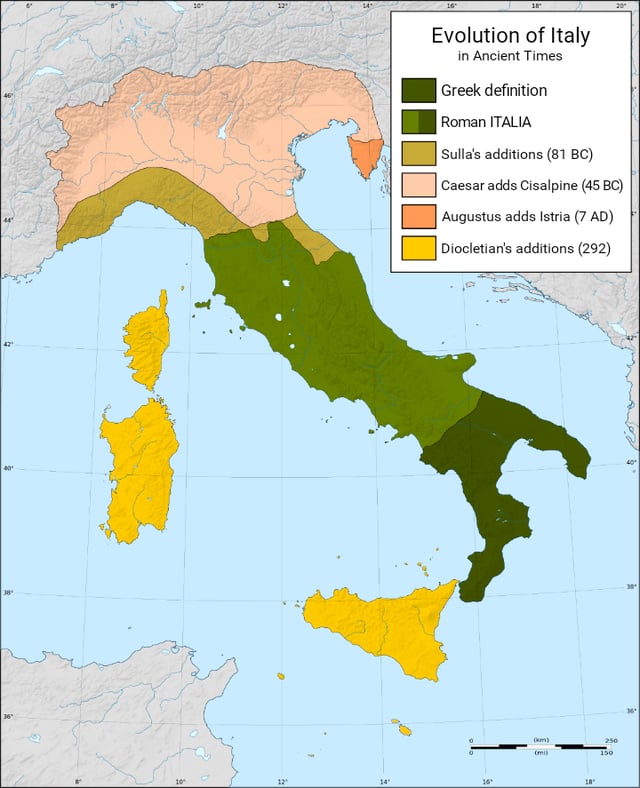
Expansion of the territory known as Italy from the establishment of the Roman Republic until Diocletian.
The Italian peninsula was divided into a multitude of tribal or ethnic territory prior to the Roman conquest of Italy in the 3rd century BC. After a series of wars between Greeks and Etruscans, the Latins, with Rome as their capital, gained the ascendancy by 272 BC, and completed the conquest of the Italian peninsula by 218 BC.
This period of unification was followed by one of conquest in the Mediterranean, beginning with the First Punic War against Carthage. In the course of the century-long struggle against Carthage, the Romans conquered Sicily, Sardinia and Corsica. Finally, in 146 BC, at the conclusion of the Third Punic War, with Carthage completely destroyed and its inhabitants enslaved, Rome became the dominant power in the Mediterranean.
The process of Italian unification, and the associated Romanization, culminated in 88 BC, when, in the aftermath of the Social War, Rome granted its Italian allies full rights in Roman society, extending Roman citizenship to all Italic peoples.[58]
From its inception, Rome was a republican city-state, but four famous civil conflicts destroyed the republic: Lucius Cornelius Sulla against Gaius Marius and his son (88–82 BC), Julius Caesar against Pompey (49–45 BC), Marcus Junius Brutus and Gaius Cassius Longinus against Mark Antony and Octavian (43 BC), and Mark Antony against Octavian. Octavian, the final victor (31 BC), was accorded the title of Augustus by the Senate and thereby became the first Roman emperor. Augustus created for the first time an administrative region called Italia with inhabitants called "Italicus populus", stretching from the Alps to Sicily: for this reason historians like Emilio Gentile called him Father of Italians.[59]
In the 1st century BC, Italia was still a collection of territories with different political statuses. Some cities, called municipia, had some independence from Rome, while others, the coloniae, were founded by the Romans themselves. Around 7 BC, Augustus divided Italy into eleven regiones. During the Crisis of the Third Century the Roman Empire nearly collapsed under the combined pressures of invasions, military anarchy and civil wars, and hyperinflation. In 284, emperor Diocletian restored political stability. The importance of Rome declined, because the city was far from the troubled frontiers. The seats of the Caesars were Augusta Treverorum (on the River Rhine frontier) for Constantius Chlorus and Sirmium (on the River Danube frontier) for Galerius who also resided at Thessaloniki. Under Diocletian, Italy became the Dioecesis Italiciana, subdivided into thirteen provinces, now including Raetia. Under Constantine the Great, Italy became the Praetorian prefecture of Italy (praefectura praetoria Italiae), and was subdivided into two dioceses. Diocesis Italia annonaria (Italy of the annona, governed from Milan) and Diocesis Italia Suburbicaria' (Italy "under the government of the urbs", i.e. governed from Rome). Christianity became the Roman state religion in AD 380, under emperor Theodosius I. The last Western emperor, Romulus Augustulus, was deposed in 476 by a Germanic foederati general in Italy, Odoacer. His defeat marked the end of the western part of the Roman Empire, and the end of the political unification of Italy until the establishment of the modern Kingdom of Italy in 1861.
The Middle Ages

Italy after the Peace of Lodi in 1454.
Odoacer ruled well for 13 years after gaining control of Italy in 476. Then he was attacked and defeated by Theodoric, the king of another Germanic tribe, the Ostrogoths. Theodoric and Odoacer ruled jointly until 493, when Theodoric murdered Odoacer. Theodoric continued to rule Italy with an army of Ostrogoths and a government that was mostly Italian. After the death of Theodoric in 526, the kingdom began to grow weak. By 553, emperor Justinian I expelled the Ostrogoths, and Italy was included into the Byzantine Empire under the Justinian dynasty. Byzantine rule in Italy collapsed again by 572 as a result of invasions by another Germanic tribe, the Lombards. The peninsula was now dominated by the Kingdom of the Lombards, with minor remnants of Byzantine control especially in the south.
During the 5th and 6th centuries, the popes increased their influence in both religious and political matters in Italy. It was usually the popes who led attempts to protect Italy from invasion or to soften foreign rule. For about 200 years the popes opposed attempts by the Lombards, who had captured most of Italy, to take over Rome as well. The popes finally defeated the Lombards with the aid of two Frankish kings, Pepin the Short and Charlemagne. Using land won for them by Pepin in 756, the popes established political rule in what were called the Papal States in central Italy.
The Lombards remained a threat to papal power, however, until they were crushed by Charlemagne in 774. Charlemagne added the Kingdom of the Lombards to his vast realm. In recognition of Charlemagne's power, and to cement the church's alliance with him, Charlemagne was crowned emperor of the Romans by Pope Leo III in 800.[60] After Charlemagne's death in 814, his son Louis the Pious succeeded him. Louis divided the empire among his sons, and Frankish Italy became part of Middle Francia, extending as far south as Rome and Spoleto. This Kingdom of Italy became part of the Holy Roman Empire in the 10th century, while southern Italy was under the rule of the Lombard Principality of Benevento or of the Byzantine Empire, in the 12th century absorbed into the Kingdom of Sicily.
Rise of the city-states and the Renaissance
From the 11th century on, Italian cities began to grow rapidly in independence and importance. They became centres of political life, banking, and foreign trade. Some became wealthy, and many, including Florence, Rome, Genoa, Milan, Pisa, Siena and Venice, grew into nearly independent city-states. Each had its own foreign policy and political life. They all resisted the efforts of noblemen and emperors to control them.
The emergence of identifiable Italian dialects from Vulgar Latin, and as such the possibility of a specifically "Italian" ethnic identity, has no clear-cut date, but takes place from roughly 12th century. Modern standard Italian derives from the written vernacular of Tuscan writers of the 12th century. The recognition of Italian vernaculars as literary languages in their own right begins with De vulgari eloquentia, an essay written by Dante Alighieri at the beginning of the 14th century.
During the 14th and 15th centuries, some Italian city-states ranked among the most important powers of Europe. Venice, in particular, had become a major maritime power, and the city-states as a group acted as a conduit for goods from the Byzantine and Islamic empires. In this capacity, they provided great impetus to the developing Renaissance, began in Florence in the 14th century,[61] and led to an unparalleled flourishing of the arts, literature, music, and science.
However, the city-states were often troubled by violent disagreements among their citizens. The most famous division was between the Guelphs and Ghibellines. The Guelphs supported supreme rule by the pope, and the Ghibellines favoured the emperor. City-states often took sides and waged war against each other. During the Renaissance, Italy became an even more attractive prize to foreign conquerors. After some city-states asked for outside help in settling disputes with their neighbours, King Charles VIII of France marched into Italy in 1494; he soon withdrew, showing that the Italian peninsula's delicate equilibrium could be taken advantage of. After the Italian Wars, Spain emerged as the dominant force in the region. Venice, Milan, and other city-states retained at least some of their former greatness during this period, as did Savoy-Piedmont, protected by the Alps and well defended by its vigorous rulers.
The French Revolution and Napoleon
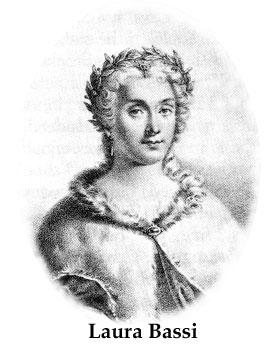
Laura Bassi, the first chairwoman of a university in a scientific field of studies
The French Revolution and Napoleon influenced Italy more deeply than they affected any other outside country of Europe. The French Revolution began in 1789 and immediately found supporters among the Italian people. The local Italian rulers, sensing danger in their own country, drew closer to the European kings who opposed France. After the French king was overthrown and France became a republic, secret clubs favouring an Italian republic were formed throughout Italy. The armies of the French Republic began to move across Europe. In 1796, Napoleon Bonaparte led a French army into northern Italy and drove out the Austrian rulers. Once again, Italy was the scene of battle between the Habsburgs and the French. Wherever France conquered, Italian republics were set up, with constitutions and legal reforms. Napoleon made himself emperor in 1804, and part of northern and central Italy was unified under the name of the Kingdom of Italy, with Napoleon as king. The rest of northern and central Italy was annexed by France. Only Sicily and the island of Sardinia, which had been ceded to the House of Savoy in 1720 and had been under their rule ever since, remained free of French control.
French domination lasted less than 20 years, and it differed from previous foreign control of the Italian peninsula. In spite of heavy taxation and frequent harshness, the French introduced representative assemblies and new laws that were the same for all parts of the country. For the first time since the days of ancient Rome, Italians of different regions used the same money and served in the same army. Many Italians began to see the possibility of a united Italy free of foreign control.
The Kingdom of Italy

The Expedition of the Thousand.
After the Battle of Waterloo, the reaction set in with the Congress of Vienna allowed the restoration of many of the old rulers and systems under Austrian domination. The concept of nationalism continued strong, however, and sporadic outbreaks led by such inveterate reformers as Giuseppe Mazzini occurred in several parts of the peninsula down to 1848–49. This Risorgimento movement was brought to a successful conclusion under the guidance of Camillo Benso, conte di Cavour, prime minister of Piedmont.
Cavour managed to unite most of Italy under the headship of Victor Emmanuel II of the house of Savoy, and on 17 March 1861, the Kingdom of Italy was proclaimed with Victor Emmanuel II as king. Giuseppe Garibaldi, the popular republican hero of Italy, contributed much to this achievement and to the subsequent incorporation of the Papal States under the Italian monarch. Italian troops occupied Rome in 1870, and in July 1871, this formally became the capital of the kingdom. Pope Pius IX, a longtime rival of Italian kings, stated he had been made a "prisoner" inside the Vatican walls and refused to cooperate with the royal administration. Only in 1929 did the Roman Pope accept the unified Italy with Rome as capital.
In the decades following unification, Italy started to create colonies in Africa, and under Benito Mussolini's fascism conquered Ethiopia founding in 1936 the Italian Empire. World War I has also been interpreted to have completed the process of Italian unification, with the annexation of Trieste, Istria, Trentino-Alto Adige and Zara. The Italians grew to 45 millions in 1940 and the land, whose economy had been until that time based upon agriculture, started its industrial development, mainly in northern Italy. But World War II soon destroyed Italy and its colonial power.
The Italian Republic
Between 1945 and 1948, the outlines of a new Italy began to appear. Victor Emmanuel III gave up the throne on 9 May 1946, and his son, Umberto II, became king. On 2 June Italy held its first free election after 20 years of Fascist rule (the so-called Ventennio). Italians chose a republic to replace the monarchy, which had been closely associated with Fascism. They elected a Constituent Assembly to prepare a new democratic constitution. The Assembly approved the constitution in 1947, which came into force on 1 January 1948.
Culture
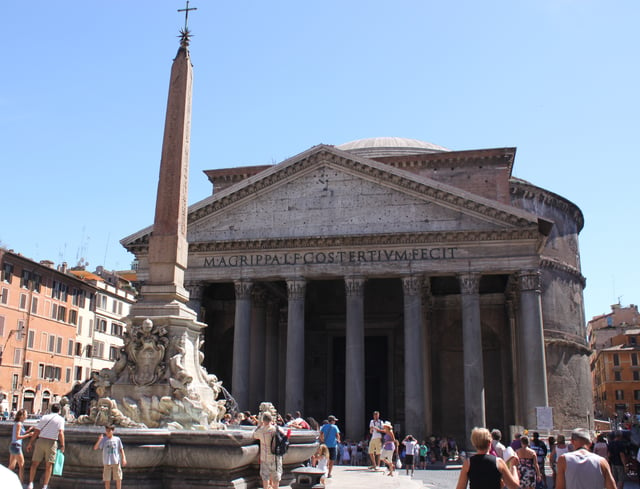
The Pantheon and the Fontana del Pantheon. Roman relics and Roman culture are important national symbols in Italy.

Italian women dance the tarantella, 1846
From the Magna Graecia period to the 17th century, the inhabitants of the Italian peninsula were at the forefront of Western culture, being the fulcrum and origin of Magna Graecia, Ancient Rome, the Roman Catholic Church, Humanism, the Renaissance, Baroque, the Counter-Reformation and Neoclassicism.
Italy also became a seat of great formal learning in 1088 with the establishment of the University of Bologna, the first university in the Western World.[62] Many other Italian universities soon followed. For example, the Schola Medica Salernitana, in southern Italy, was the first medical school in Europe.[63] These great centres of learning presaged the Rinascimento: the European Renaissance began in Italy and was fueled throughout Europe by Italian painters, sculptors, architects, scientists, literature masters and music composers. Italy continued its leading cultural role through the Baroque period and into the Romantic period, when its dominance in painting and sculpture diminished but the Italians re-established a strong presence in music.
Italian explorers and navigators in the 15th and 16th centuries left a perennial mark on human history with the modern "discovery of America", due to Christopher Columbus. In addition, the name of the American continents derives from the geographer Amerigo Vespucci's first name. Also noted, is explorer Marco Polo who travelled extensively throughout the eastern world recording his travels.
Due to comparatively late national unification, and the historical autonomy of the regions that comprise the Italian peninsula, many traditions and customs of the Italians can be identified by their regions of origin. Despite the political and social isolation of these regions, Italy's contributions to the cultural and historical heritage of the Western world remain immense. Famous elements of Italian culture are its opera and music, its iconic gastronomy and food, which are commonly regarded as amongst the most popular in the world,[64] its cinema (with filmmakers such as Federico Fellini, Michelangelo Antonioni, Mario Monicelli, Sergio Leone, Alberto Sordi, etc.), its collections of priceless works of art and its fashion (Milan and Florence are regarded as some of the few fashion capitals of the world).
Philosophy
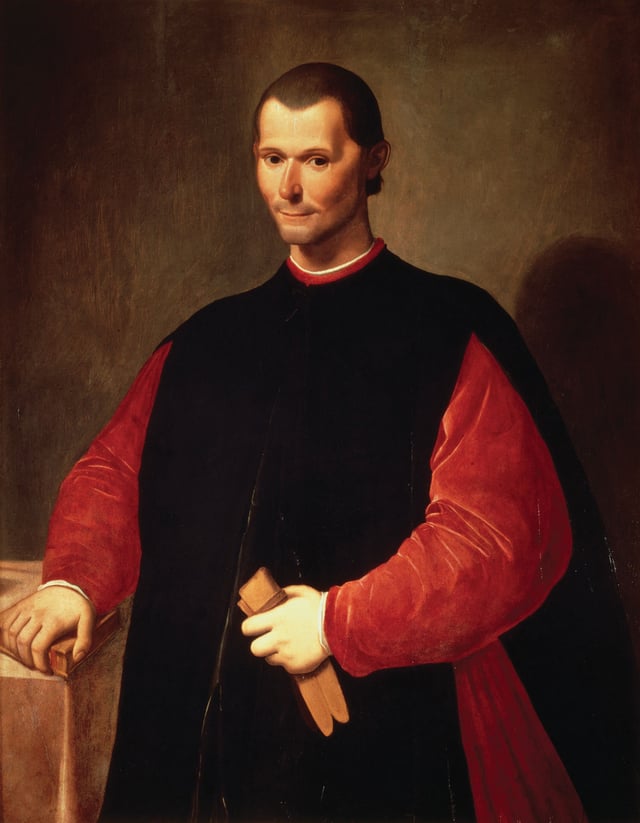
Niccolò Machiavelli, the founder of modern political science and ethics.
Over the ages Italian literature had a vast influence on Western philosophy, beginning with the Greeks and Romans, and going onto Renaissance, The Enlightenment and modern philosophy.
Italian Medieval philosophy was mainly Christian, and included several important philosophers and theologians such as St Thomas Aquinas. Aquinas was the student of Albert the Great, a brilliant Dominican experimentalist, much like the Franciscan, Roger Bacon of Oxford in the 13th century. Aquinas reintroduced Aristotelian philosophy to Christianity. He believed that there was no contradiction between faith and secular reason. He believed that Aristotle had achieved the pinnacle in the human striving for truth and thus adopted Aristotle's philosophy as a framework in constructing his theological and philosophical outlook. He was a professor at the prestigious University of Paris.
Italy was also affected by the Enlightenment, a movement which was a consequence of the Renaissance and changed the road of Italian philosophy.[65] Followers of the group often met to discuss in private salons and coffeehouses, notably in the cities of Milan, Rome and Venice. Cities with important universities such as Padua, Bologna and Naples, however, also remained great centres of scholarship and the intellect, with several philosophers such as Giambattista Vico (1668–1744) (who is widely regarded as being the founder of modern Italian philosophy)[66] and Antonio Genovesi.[65] Italian society also dramatically changed during the Enlightenment, with rulers such as Leopold II of Tuscany abolishing the death penalty. The church's power was significantly reduced, and it was a period of great thought and invention, with scientists such as Alessandro Volta and Luigi Galvani discovering new things and greatly contributing to Western science.[65] Cesare Beccaria was also one of the greatest Italian Enlightenment writers and now considered one of the fathers of classical criminal theory as well as modern penology.[67] Beccaria is famous for his masterpiece On Crimes and Punishments (1764), a treatise (later translated into 22 languages) that served as one of the earliest prominent condemnations of torture and the death penalty and thus a landmark work in anti-death penalty philosophy.[65]
Some of the most prominent philosophies and ideologies in Italy during the late 19th and 20th centuries include anarchism, communism, socialism, futurism, fascism, and Christian democracy. Both futurism and fascism (in its original form, now often distinguished as Italian fascism) were developed in Italy at this time. From the 1920s to the 1940s, Italian Fascism was the official philosophy and ideology of the Italian government led by Benito Mussolini. Giovanni Gentile was one of the most significant 20th-century Idealist/Fascist philosophers. Meanwhile, anarchism, communism, and socialism, though not originating in Italy, took significant hold in Italy during the early 20th century, with the country producing numerous significant Italian anarchists, socialists, and communists. In addition, anarcho-communism first fully formed into its modern strain within the Italian section of the First International.[68] Antonio Gramsci remains an important philosopher within Marxist and communist theory, credited with creating the theory of cultural hegemony.
Literature
Italian literature may be unearthed back to the Middle Ages, with the most significant poets of the period being Dante Alighieri, Petrarch, and Giovanni Boccaccio. During the Renaissance, humanists such as Leonardo Bruni, Coluccio Salutati and Niccolò Machiavelli were great collectors of antique manuscripts. Many worked for the organized Church and were in holy orders (like Petrarch), while others were lawyers and chancellors of Italian cities, like Petrarch's disciple, Salutati, the Chancellor of Florence, and thus had access to book copying workshops. One of the most remarkable poets of the early 19 and 20th century writers was Giacomo Leopardi, who is widely acknowledged to be one of the most radical and challenging thinkers of the 19th century.[69][70] Italo Svevo, the author of La coscienza di Zeno (1923), and Luigi Pirandello (winner of the 1934 Nobel Prize in Literature), who explored the shifting nature of reality in his prose fiction and such plays as Sei personaggi in cerca d'autore (Six Characters in Search of an Author, 1921). Federigo Tozzi and Giuseppe Ungaretti were well-known novelists, critically appreciated only in recent years, and regarded one of the forerunners of existentialism in the European novel.
Law and justice
Since the Roman Empire, most western contributions to Western legal culture was the emergence of a class of Roman jurists. During the Middle Ages, St. Thomas Aquinas, the most influential western scholar of the period, integrated the theory of natural law with the notion of an eternal and biblical law.[71] During the Renaissance, Prof. Alberico Gentili, the founder of the science of international law, authored the first treatise on public international law and separated secular law from canon law and Roman Catholic theology. Enlightenment's greatest legal theorists, Cesare Beccaria, Giambattista Vico and Francesco Mario Pagano, are well remembered for their legal works, particularly on criminal law. Francesco Carrara, an advocate of abolition of the death penalty, was one of the foremost European criminal lawyers of the 19th century. During the last periods, numerous Italians have been recognised as the prominent prosecutor magistrates.
Science and technology
Italians have been the central figures of countless inventions and discoveries and they made many predominant contributions to various fields. During the Renaissance, Italian polymaths such as Leonardo da Vinci (1452–1519), Michelangelo (1475–1564) and Leon Battista Alberti (1404–72) made important contributions to a variety of fields, including biology, architecture, and engineering. Galileo Galilei (1564–1642), a physicist, mathematician and astronomer, played a major role in the Scientific Revolution. His achievements include the invention of the thermometer and key improvements to the telescope and consequent astronomical observations, and ultimately the triumph of Copernicanism over the Ptolemaic model. Other astronomers such as Giovanni Domenico Cassini (1625–1712) and Giovanni Schiaparelli (1835–1910) made many important discoveries about the Solar System. Physicist Enrico Fermi (1901–54), a Nobel prize laureate, led the team in Chicago that built the first nuclear reactor and is also noted for his many other contributions to physics, including the co-development of the quantum theory. He and a number of Italian physicists were forced to leave Italy in the 1930s by Fascist laws against Jews, including Emilio G. Segrè (1905–89) (who discovered the elements technetium and astatine, and the antiproton),[72] and Bruno Rossi (1905–93), a pioneer in Cosmic Rays and X-ray astronomy. Other prominent physicists and scientists include: Amedeo Avogadro (most noted for his contributions to molecular theory, in particular Avogadro's law and the Avogadro constant), Giulio Natta (the inventor of the first catalyst for the production of isotactic propylene and among the fathers of macromolecular chemistry, for which he won the Nobel prize for chemistry along with Karl Ziegler), Evangelista Torricelli (inventor of the barometer), Alessandro Volta (inventor of the electric battery), Guglielmo Marconi (inventor of radio), Antonio Meucci (known for developing a voice-communication apparatus, often credited as the inventor of the first telephone before even Alexander Graham Bell),[73][74] Galileo Ferraris (one of the pioneers of AC power system, invented the first induction motor), Ettore Majorana (who discovered the Majorana fermions), and Carlo Rubbia (1984 Nobel Prize in Physics for work leading to the discovery of the W and Z particles at CERN).
In biology, Francesco Redi was the first to challenge the theory of spontaneous generation by demonstrating that maggots come from eggs of flies and he described 180 parasites in detail; Marcello Malpighi founded microscopic anatomy; Lazzaro Spallanzani conducted important research in bodily functions, animal reproduction, and cellular theory; Camillo Golgi, whose many achievements include the discovery of the Golgi complex, paved the way to the acceptance of the Neuron doctrine; Rita Levi-Montalcini discovered the nerve growth factor (awarded 1986 Nobel Prize in Physiology or Medicine); Angelo Ruffini first described the Ruffini endings and was known for his work in histology and embryology; Filippo Pacini discovered the Pacinian corpuscles and was the first to isolate the cholera bacillus Vibrio cholerae in 1854, before Robert Koch's more widely accepted discoveries 30 years later. In chemistry, Giulio Natta received the Nobel Prize in Chemistry in 1963 for his work on high polymers. Giuseppe Occhialini received the Wolf Prize in Physics for the discovery of the pion or pi-meson decay in 1947.
Mathematics
During the Middle Ages, Leonardo Fibonacci, the greatest Western mathematician of the Middle Ages, introduced the Hindu–Arabic numeral system to the Western World and he also introduced the sequence of Fibonacci numbers which he used as an example in Liber Abaci. Gerolamo Cardano, introduced the probability and established the binomial coefficients and binomial theorem and he also invented some essential objects. During the Renaissance, Luca Pacioli established accounting to the world, published the first work on Double-entry bookkeeping system. Galileo Galilei made several significant advances in mathematics. Bonaventura Cavalieri's works anticipated integral calculus and popularized logarithms in Italy. Jacopo Riccati, who was also a jurist, invented the Riccati equation. Maria Gaetana Agnesi, the first woman to write a mathematics handbook, become the first woman mathematics professor at a university. Gian Francesco Malfatti, posed the problem of carving three circular columns out of a triangular block of marble, using as much of the marble as possible, and conjectured that three mutually-tangent circles inscribed within the triangle would provide the optimal solution, which are now known as Malfatti circles. Joseph-Louis Lagrange, who was one of the most influential mathematician of his time, made essential works to analysis, number theory, and both classical and celestial mechanics. Gregorio Ricci-Curbastro invented the Tensor calculus and made meaningful works on algebra, infinitesimal analysis, and papers on the theory of real numbers.[75] Giuseppe Peano, founded the mathematical logic, the set theory, and alongside John Venn drew the first Venn diagram. Gregorio Ricci-Curbastro is well known for his invention on absolute differential calculus (tensor calculus), further developed by Tullio Levi-Civita, and its applications to the theory of relativity. Beniamino Segre is one of the main contributor of algebraic geometry and one of the founders of finite geometry. Paolo Ruffini is credited for his innovative work in mathematics, creating "Ruffini's rule" and co-creating the Abel–Ruffini theorem. Ennio de Giorgi, a Wolf Prize in Mathematics recipient in 1990, solved Bernstein's problem about minimal surfaces and the 19th Hilbert problem on the regularity of solutions of Elliptic partial differential equations.
Architecture
As Italy is home to the greatest number of UNESCO World Heritage Sites (51) to date and it is home to half the world's great art treasures,[76] Italians are known for their significant architectural achievements,[77] such as the construction of arches, domes and similar structures during ancient Rome, the founding of the Renaissance architectural movement in the late-14th to 16th centuries, and being the homeland of Palladianism, a style of construction which inspired movements such as that of Neoclassical architecture, and influenced the designs which noblemen built their country houses all over the world, notably in the UK, Australia and the US during the late 17th to early 20th centuries. Several of the finest works in Western architecture, such as the Colosseum, the Milan Cathedral and Florence cathedral, the Leaning Tower of Pisa and the building designs of Venice are found in Italy.
Italian architecture has also widely influenced the architecture of the world. British architect Inigo Jones, inspired by the designs of Italian buildings and cities, brought back the ideas of Italian Renaissance architecture to 17th-century England, being inspired by Andrea Palladio.[78] Additionally, Italianate architecture, popular abroad since the 19th century, was used to describe foreign architecture which was built in an Italian style, especially modelled on Renaissance architecture.
Music

Bartolomeo Cristofori, the inventor of the piano
From folk music to classical, music has always played an important role in Italian culture. Instruments associated with classical music, including the piano and violin, were invented in Italy, and many of the prevailing classical music forms, such as the symphony, concerto, and sonata, can trace their roots back to innovations of 16th- and 17th-century Italian music. Italians invented many of the musical instruments, including the piano and violin.
Most notable Italians composers include the Giovanni Pierluigi da Palestrina, Claudio Monteverdi, the Baroque composers Scarlatti, Corelli and Vivaldi, the Classical composers Paganini and Rossini, and the Romantic composers Verdi and Puccini, whose operas, including La bohème, Tosca, Madama Butterfly, and Turandot, are among the most frequently worldwide performed in the standard repertoire.[79][80] Modern Italian composers such as Berio and Nono proved significant in the development of experimental and electronic music. While the classical music tradition still holds strong in Italy, as evidenced by the fame of its innumerable opera houses, such as La Scala of Milan and San Carlo of Naples, and performers such as the pianist Maurizio Pollini and the late tenor Luciano Pavarotti, Italians have been no less appreciative of their thriving contemporary music scene.
Italians are amply known as the mothers of opera.[81] Italian opera was believed to have been founded in the early 17th century, in Italian cities such as Mantua and Venice.[81] Later, works and pieces composed by native Italian composers of the 19th and early 20th centuries, such as Rossini, Bellini, Donizetti, Verdi and Puccini, are among the most famous operas ever written and today are performed in opera houses across the world. La Scala operahouse in Milan is also renowned as one of the best in the world. Famous Italian opera singers include Enrico Caruso and Alessandro Bonci.
Introduced in the early 1920s, jazz took a particularly strong foothold among Italians, and remained popular despite the xenophobic cultural policies of the Fascist regime. Today, the most notable centres of jazz music in Italy include Milan, Rome, and Sicily. Later, Italy was at the forefront of the progressive rock movement of the 1970s, with bands like PFM and Goblin. Italy was also an important country in the development of disco and electronic music, with Italo disco, known for its futuristic sound and prominent usage of synthesizers and drum machines, being one of the earliest electronic dance genres, as well as European forms of disco aside from Euro disco (which later went on to influence several genres such as Eurodance and Nu-disco).
Producers and songwriters such as Giorgio Moroder, who won three Academy Awards for his music, were highly influential in the development of EDM (electronic dance music). Today, Italian pop music is represented annually with the Sanremo Music Festival, which served as inspiration for the Eurovision song contest, and the Festival of Two Worlds in Spoleto. Singers such as pop diva Mina, classical crossover artist Andrea Bocelli, Grammy winner Laura Pausini, and European chart-topper Eros Ramazzotti have attained international acclaim.
Cinema

Federico Fellini, recognized as one of the greatest and most influential filmmakers of all time.
Since the development of the Italian film industry in the early 1900s, Italian filmmakers and performers have, at times, experienced both domestic and international success, and have influenced film movements throughout the world.
Following the Fascist era, characterized by the Telefoni Bianchi genre, they got international critical acclaim through the Neorealist genre, and starting from the 1960s through the Commedia all'italiana genre as well as through a number of auteurs such as Vittorio De Sica, Federico Fellini, Pier Paolo Pasolini, Luchino Visconti, Michelangelo Antonioni and Roberto Rossellini.[82] Actresses such as Sophia Loren, Giulietta Masina and Gina Lollobrigida achieved international stardom during this period.[83]
Since the early 1960s they also popularized a large number of genres and subgenres, such as Peplum, Macaroni Combat, Musicarello, Poliziotteschi and Commedia sexy all'italiana.[82] The Spaghetti Western achieved popularity in the mid-1960s, peaking with Sergio Leone's Dollars Trilogy, which featured enigmatic scores by composer Ennio Morricone. Erotic Italian thrillers, or Giallos, produced by directors such as Mario Bava and Dario Argento in the 1970s, influenced the horror genre worldwide. In recent years, directors such as Ermanno Olmi, Bernardo Bertolucci, Giuseppe Tornatore, Gabriele Salvatores, Roberto Benigni, Matteo Garrone, Paolo Sorrentino and Luca Guadagnino brought critical acclaim back to Italian cinema.
So far, Italy has won 14 Academy Awards for Best Foreign Language Film, the most of any country, and 12 Palme d'Or, the second-most of any country.
Sport

Motorcycle racer Giacomo Agostini
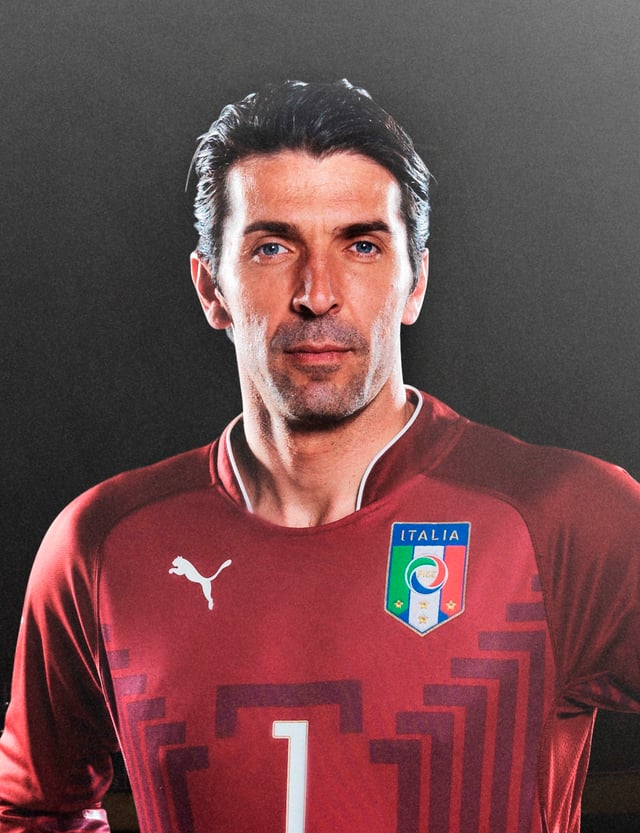
Gianluigi Buffon, the highest-priced goalkeeper and the most capped player for the Italian national team
Italians have a long tradition in sport. In numerous sports, both individual and team, Italy has been very successful.
Association football is the most popular sport in Italy. Italy is one of the most successful national teams in association football having four FIFA World Cups, one UEFA European Championship and one Olympic tournament. Amongst the players who won the FIFA World Cup there are Giuseppe Meazza, Silvio Piola (to date the highest goalscorer in Italian first league history), Dino Zoff, Paolo Rossi, Marco Tardelli, Bruno Conti, Gianluigi Buffon, Fabio Cannavaro, Alessandro Del Piero, Andrea Pirlo and Francesco Totti. Amongst those who did not win the World Cup but laureated as European champions are Gianni Rivera, Luigi Riva (to date Italy's leading scorer of all time), Sandro Salvadore, Giacomo Bulgarelli, Pietro Anastasi and Giacinto Facchetti. Other prominent players who achieved success at club level are Giampiero Boniperti, Romeo Benetti, Roberto Boninsegna, Roberto Bettega, Roberto Baggio and Paolo Maldini. Of the above-mentioned, the goalkeeper Dino Zoff, who served in the National team from 1968 to 1983, is to date the only Italian player to have won both the European championship (in 1968) and the FIFA World Cup (in 1982), apart from being the oldest winner ever of the World Cup. At club level, to date Italy has won a total of 12 European Cup / Champions' Leagues, 9 UEFA Cups / UEFA Europa League and 7 UEFA Cup Winners' Cup.
Motorcycle racers such as Giacomo Agostini and Valentino Rossi are recognized as some of the greatest sportstars of all time. Federica Pellegrini, one of the few female swimmers to have set world records in more than one event has been one of the world's most successful swimmers. Italian athletes have won 549 medals at the Summer Olympic Games, and another 114 medals at the Winter Olympic Games. Jessica Rossi scored a Shooting sport world record of 75 in the qualification and a world record of 99. As for Olympic games, 663 Italians won medals, particularly in Swordsmanship, which makes them the 6th most successful ethnic group in Olympic history. There are more than 2,000,000 Italian skiers in the world, most of them in the north and in the centre. Italian skiers received good results in the Winter Olympic Games, World Cup, and World Championships.
Italians are the second of the most who have won the World Cycling Championship more than any other country after Belgium. The Giro d'Italia is a world-famous long-distance cycling race held every May, and constitutes one of the three Grand Tours, along with the Tour de France and the Vuelta a España, each of which last approximately three weeks. Tennis has a significant following near courts and on television. Italian professional tennis players are almost always in the top 100 world ranking of male and female players. Beach tennis with paddle racquet was invented by Italians, and is practised by many people across the country. Volleyball is played by a lot of amateur players and professional players compete in the Italian Volleyball League, regarded as the best and most difficult volleyball league in the world. The male and female national teams are often in the top 4 ranking of teams in the world. Athletics is a popular sport for Italians, as the Italian World and Olympic champions are very celebrated people. In wrestling, one of the most remarkable wrestlers is Bruno Sammartino, who held the record of the WWWF (World) Heavyweight Championship for over 11 years across two reigns, the first of which is the longest single reign in the promotion's history.
Rugby union was imported from France in the 1910s and has been regularly played since the 1920s; the National team has progressed slowly but significantly during the decades and thanks to the good results achieved in the second half of the 1990s, when they managed to beat historical teams like Scotland, Ireland and eventually France, Italy gained the admission to the Five Nation Championship, later renamed Six Nations; Italy has taken part to the Rugby World Cup since its inauguration in 1987 and never missed an edition though to date has never gone past the group stage.
Ethnogenesis
Due to historic demographic shifts in the Italian peninsula throughout history, as well as Italy's ethnic diversity since ancient times, the modern Italians are not a genetically homogeneous population.[84] This includes pre-Indo-European language peoplea, such as the Etruscans, Rhaetians, Camuni and the Ligures,[85] and pre-Roman Indo-European language peoples, like the Celts, the Italic peoples (such as the Latino-Faliscans, the Osco-Umbrians, the Sicels and the Veneti), and a significant number of Greeks. The majority of Italians originate from these two primary elements and, like much of the Romance-speaking Southern Europe, share a common Latin heritage and history.
Ancient history
The earliest modern humans inhabiting Italy are believed to have been Paleolithic peoples that may have arrived in the Italian Peninsula as early as 35,000 to 40,000 years ago. Italy is believed to have been a major Ice-age refuge from which Paleolithic humans later colonized Europe.
The Neolithic colonization of Europe from Western Asia and the Middle East beginning around 10,000 years ago reached Italy, as most of the rest of the continent although, according to the demic diffusion model, its impact was most in the southern and eastern regions of the European continent.[86]
Indo-European
Starting in the 4th millennium BC as well as in the Bronze Age, the first wave of migrations into Italy of Indo-European-speaking peoples occurred, with the appearance of the Remedello, the Rinaldone and the Gaudo cultures. These were later (from the 18th century BC) followed by others that can be identified as Italo-Celts, with the appearance of the Proto-Celtic Canegrate culture[87] and the Proto-Italic Terramare culture,[88] both deriving from the Proto-Italo-Celtic Tumulus and Unetice cultures.
Later, Celtic La Tène and Hallstatt cultures have been documented in Italy as far south as Umbria[89][90] and Latium[91] in Central Italy, also inhabited by the Rutuli and the Umbri, closely related to the Ligures.[92] Italics occupied Southern and Central Italy: the "West Italic" group (including the Latins) were the first wave. They had cremation burials and possessed advanced metallurgical techniques. Major tribes included the Latins and Falisci in Lazio; the Oenotrians and Italii in Calabria; the Ausones, Aurunci and Opici in Campania; and perhaps Sicels in Sicily. They were followed, and largely displaced by East Italic (Osco-Umbrians) group.[93]
Pre-Roman

Fresco of dancing Peucetian women in the Tomb of the Dancers in Ruvo di Puglia, 4th–5th century BC
By the beginning of the Iron Age the Etruscans emerged as the dominant civilization on the Italian peninsula. The Etruscans, whose primary home was in Etruria (modern Tuscany), inhabited a large part of central and northern Italy extending as far north as the Po Valley and as far south as Capua.[94] On the origins of the Etruscans, the ancient authors report several hypotheses, one of which claims that the Etruscans come from the Aegean Sea. Modern archaeological and genetic research suggests descent from the indigenous Villanovan culture of Italy.[95][96][97][98]
The Ligures are said to have been one of the oldest populations in Italy and Western Europe,[99] possibly of Pre-Indo-European origin.[100] According to Strabo they were not Celts, but later became influenced by the Celtic culture of their neighbours, and thus are sometimes referred to as Celticized Ligurians or Celto-Ligurians.[101] Their language had affinities with both Italic (Latin and the Osco-Umbrian languages) and Celtic (Gaulish). They primarily inhabited the regions of Liguria, Piedmont, northern Tuscany, western Lombardy, western Emilia-Romagna and northern Sardinia, but are believed to have once occupied an even larger portion of ancient Italy as far south as Sicily.[102][103] They were also settled in Corsica and in the Provence region along the southern coast of modern France.
During the Iron Age, prior to Roman rule, the peoples living in the area of modern Italy and the islands were:
Etruscans (Camunni, Lepontii, Raeti);
Ligures (Apuani, Bagienni, Briniates, Corsi, Friniates, Garuli, Hercates, Ilvates, Insubres, Orobii, Laevi, Lapicini, Marici, Statielli, Taurini);
Italics (Latins, Falisci, Marsi, Umbri, Volsci, Marrucini, Osci, Aurunci, Ausones, Campanians, Paeligni, Sabines, Bruttii, Frentani, Lucani, Samnites, Pentri, Caraceni, Caudini, Hirpini, Aequi, Fidenates, Hernici, Picentes, Vestini, Morgeti, Sicels, Veneti);
Iapygians (Messapians, Daunians, Peucetians);
Gauls (Ausones, Boii, Carni, Cenomani, Graioceli, Lingones, Segusini, Senones, Salassi, Vertamocorii);
Greeks of Magna Graecia, in southern Italy;
Sardinians (Nuragic tribes);
Italy was, throughout the pre-Roman period, predominantly inhabited by Italic tribes who occupied the modern regions of Lazio, Umbria, Marche, Abruzzo, Molise, Campania, Basilicata, Calabria, Apulia and Sicily. Sicily, in addition to having an Italic population in the Sicels, also was inhabited by the Sicani and the Elymians, of uncertain origin. The Veneti, most often regarded as an Italic tribe,[104] chiefly inhabited the Veneto, but extended as far east as Friuli-Venezia Giulia and Istria, and had colonies as far south as Lazio.[105][106]
Beginning in the 8th century BC, Greeks arrived in Italy and founded cities along the coast of southern Italy and eastern Sicily, which became known as Magna Graecia ("Greater Greece"). The Greeks were frequently at war with the native Italic tribes, but nonetheless managed to Hellenize and assimilate a good portion of the indigenous population located along eastern Sicily and the Southern coasts of the Italian mainland.[107][108] According to Beloch the number of Greek citizens in south Italy at its greatest extent reached only 80,000–90,000, while the local people subjected by the Greeks were between 400,000–600,000.[109][110] By the 4th and 3rd century BC, Greek power in Italy was challenged and began to decline, and many Greeks were pushed out of peninsular Italy by the native Oscan, Brutti and Lucani tribes.[111]
The Gauls crossed the Alps and invaded northern Italy in the 4th and 3rd centuries BC, settling in the area that became known as Cisalpine Gaul ("Gaul on this side of the Alps"). Although named after the Gauls, the region was mostly inhabited by indigenous tribes, namely the Ligures, Etruscans, Veneti and Euganei. Estimates by Beloch and Brunt suggest that in the 3rd century BC the Gaulish settlers of north Italy numbered between 130,000–140,000 out of a total population of about 1.4 million.[110][112][112] According to Pliny and Livy, after the invasion of the Gauls, some of the Etruscans living in the Po Valley sought refuge in the Alps and became known as the Raeti.[113][114] The Raeti inhabited the region of Trentino-Alto Adige, as well as eastern Switzerland and Tyrol in western Austria. The Ladins of north-eastern Italy and the Romansh people of Switzerland are said to be descended from the Raeti.[115]
Roman
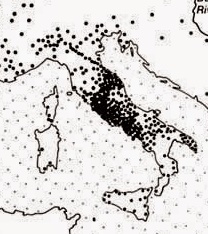
Map of roman coloniae during the second century in Italy
The Romans—who according to legend originally consisted of three ancient tribes: Latins, Sabines and Etruscans[116]—would go on to conquer the whole Italian peninsula. During the Roman period hundreds of cities and colonies were established throughout Italy, including Florence, Turin, Como, Pavia, Padua, Verona, Vicenza, Trieste and many others. Initially many of these cities were colonized by Latins, but later also included colonists belonging to the other Italic tribes who had become Latinized and joined to Rome. After the Roman conquest of Italy "the whole of Italy had become Latinized".[117]
After the Roman conquest of Cisalpine Gaul and the widespread confiscations of Gallic territory, much of the Gaulish population was killed or expelled.[118][119] Many colonies were established by the Romans in the former Gallic territory of Cisalpine Gaul, which was then settled by Roman and Italic people. These colonies included Bologna, Modena, Reggio Emilia, Parma, Piacenza, Cremona and Forlì. According to Strabo:
"The greater part of the country used to be occupied by the Boii, Ligures, Senones, and Gaesatae; but since the Boii have been driven out, and since both the Gaesatae and the Senones have been annihilated, only the Ligurian tribes and the Roman colonies are left."[119]
Population movement and exchange among people from different regions was not uncommon during the Roman period. Latin colonies were founded at Ariminum in 268 and at Firmum in 264,[121] while large numbers of Picentes, who previously inhabited the region, were moved to Paestum and settled along the river Silarus in Campania. Between 180–179 BC, 47,000 Ligures belonging to the Apuani tribe were removed from their home along the modern Ligurian-Tuscan border and deported to Samnium, an area corresponding to inland Campania, while Latin colonies were established in their place at Pisa, Lucca and Luni.[122] Such population movements contributed to the rapid Romanization and Latinization of Italy.[123]
Middle Ages and modern period

Lombard (Northern Italian) colonies of Sicily: in light blue: the cities where Gallo-Italic language is spoken today. In dark blue: the cities where there is a good influence of the Gallo-Italic language. In purple: ancient Gallo-Italic colonies, the influence in these cities is variable, also some districts of Messina were colonized.

Map of Tuscan settlements in Sicily.
A large Germanic confederation of Scirii, Heruli, Turcilingi and Rugians, led by Odoacer, invaded and settled Italy in 476.[124] They were preceded by 120,000 Alemanni, including 30,000 warriors with their families, who settled in the Po Valley in 371,[125] and by 100,000 Burgundians who settled between North Western Italy and Southern France in 443.[126] The Germanic tribe of the Ostrogoths led by Theoderic the Great conquered Italy and presented themselves as upholders of Latin culture, mixing Roman culture together with Gothic culture, in order to legitimize their rule amongst Roman subjects who had a long-held belief in the superiority of Roman culture over foreign "barbarian" Germanic culture.[127] The number of Goths under Theodoric has been variously estimated between 200,000 and 250,000.[128] Since Italy had a population of several million, the Goths did not constitute a significant addition to the local population.[129] At the height of their power, there were about 200,000 Ostrogoths in a population of 6 or 7 million.[126][130] Before them, Radagaisus led between 200,000 and 400,000 Goths in Italy in 406 perhaps too high as ancient sources routinely inflated the numbers of tribal invaders.[131] After the Gothic War, which devastated the local population, the Ostrogoths were defeated. But in the sixth century, another Germanic tribe known as the Longobards invaded Italy, which in the meantime had been reconquered by the East Roman or Byzantine Empire. The Longobards were a small minority compared to the roughly four million people in Italy at the time.[132] They were no more than 500,000 settlers – 10–15% of the total population.[132][133] They were later followed by the Bavarians and the Franks, who conquered and ruled most of Italy. Numerous groups of Slavs and Bulgars, pushed by the Khazars, settled in the Italian peninsula between the 7th and the 8th centuries.[134][135][136]
Following Roman rule, Sicily and Sardinia were conquered by the Vandals, then by the Ostrogoths, and finally by the Byzantines. At one point, while Sardinia grew increasingly autonomous from Byzantine rule to the point of organizing itself into four sovereign Kingdoms or "Judgedoms" (Judicati) that would last until the Aragonese conquest in the 15th century. In 687, Sicily became the Byzantine Theme of Sicily, during the course of the Arab-Byzantine wars Sicily gradually came became the Emirate of Sicily (831–1072). Later a series of conflicts with the Normans; would bring about the establishment of the County of Sicily, and eventually the Kingdom of Sicily, the Lombards of Sicily (not to be confused with the Longobards), coming from the Northern Italy, settled in the central and eastern part of Sicily. After the marriage between the Norman Roger I of Sicily with Adelaide del Vasto, descendant of Aleramici family, many Northern Italian colonisers (known collectively as Lombards) left their homeland, in the Aleramici's possessions in Piedmont and Liguria (then known as Lombardy), to settle on the island of Sicily.[137][137][138]
Before them, other Lombards arrived in Sicily, with an expedition departed in 1038, led by the Byzantine commander George Maniakes,[139] which for a very short time managed to snatch Messina and Syracuse from Arab rule. The Lombards who arrived with the Byzantines settled in Maniace, Randazzo and Troina, while a group of Genoese and other Lombards from Liguria settled in Caltagirone.[140]
During the subsequent Swabian rule under the Holy Roman Emperor Frederick II, who spent most of his life as king of Sicily in his court in Palermo, Muslims was progressively eradicated until the massive deportation of the last Muslims of Sicily.[141] As a result of Arab expulsion, many towns across Sicily were left depopulated. By the 12th century, Swabian kings granted immigrants from northern Italy (particularly Piedmont, Lombardy and Liguria), Latium and Tuscany in central Italy, and French regions of Normandy, Provence and Brittany (all collectively known as Lombards.)[142][143] settlement into Sicily, re-establishing the Latin element into the island, a legacy which can be seen in the many Gallo-Italic dialects and towns found in the interior and western parts of Sicily, brought by these settlers.[144] It is believed that the Lombard immigrants in Sicily over a couple of centuries were a total of about 200,000.[145][146][147]
Some of the expelled Muslims were deported to Lucera (Lugêrah, as it was known in Arabic). Their numbers eventually reached between 15,000 and 20,000,[150] leading Lucera to be called Lucaera Saracenorum because it represented the last stronghold of Islamic presence in Italy. The colony thrived for 75 years until it was sacked in 1300 by Christian forces under the command of the Angevin Charles II of Naples. The city's Muslim inhabitants were exiled or sold into slavery,[151] with many finding asylum in Albania across the Adriatic Sea.[152] After the expulsions of Muslims in Lucera, Charles II replaced Lucera's Saracens with Christians, chiefly Burgundian and Provençal soldiers and farmers,[153] following an initial settlement of 140 Provençal families in 1273.[154] A remnant of the descendants of these Provençal colonists, still speaking a Franco-Provençal dialect, has survived until the present day in the villages of Faeto and Celle di San Vito.
The geographical and cultural proximity with Southern Italy pushed Albanians to cross the Strait of Otranto, especially after Skanderbeg's death and the conquest of the Balkans by the Ottomans. In defense of the Christian religion and in search of soldiers loyal to the Spanish crown, Alfonso V of Aragon, also king of Naples, invited Arbereshe soldiers to move to Italy with their families. In return the king guaranteed to Albanians lots of land and a favourable taxation.
Arbereshe and Schiavoni were used to repopulate abandoned villages or villages whose population had died in earthquakes, plagues and other catastrophes. Albanian soldiers were also used to quell rebellions in Calabria.
Between the Late Middle Ages and early modern period, there were several waves of immigration of Albanians into Italy, in addition to another in the 20th century.[160] The descendants of these Albanian emigrants, many still retaining the Albanian language, the Arbëresh dialect, have survived throughout Italy, numbering about 260,000 people,[161] with roughly 80,000 to 100,000 speaking the Albanian language.[162][163]
Italian surnames
Most of Italy's surnames (cognomi), with the exception of a few areas marked by linguistic minorities, derive from Italian and arose from an individual's peculiar qualities (e.g. Rossi, Bianchi, Quattrocchi, Mancini, etc.), occupation (Ferrari, Auditore, Sartori, Tagliabue, etc.), relation of fatherhood or lack thereof (De Pretis, Orfanelli, Esposito, Trovato, etc.), and geographic location (Padovano, Pisano, Leccese, Lucchese, etc.). Some of them also indicate a remote foreign origin (Greco, Tedesco, Moro, Albanese, etc.).
Italian diaspora
Italian migration outside Italy took place, in different migrating cycles, for centuries.[166] A diaspora in high numbers took place after its unification in 1861 and continued through 1914 with the emergence of the First World War. This rapid outflow and migration of Italian people across the globe can be attributed to factors such as the internal economic slump that emerged alongside its unification, family and the industrial boom that occurred in the world surrounding Italy.[167][168]
Italy after its unification did not seek nationalism but instead sought work.[167] However, a unified state did not automatically constitute a sound economy. The global economic expansion, ranging from Britain's Industrial Revolution in the late 18th and through mid 19th century, to the use of slave labor in the Americas did not hit Italy until much later (with the exception of the "industrial triangle" between Milan, Genoa and Turin)[167] This lag resulted in a deficit of work available in Italy and the need to look for work elsewhere.The mass industrialization and urbanization globally resulted in higher labor mobility and the need for Italians to stay anchored to the land for economic support declined.[168]
Moreover, better opportunities for work were not the only incentive to move; family played a major role and the dispersion of Italians globally. Italians were more likely to migrate to countries where they had family established beforehand.[168] These ties are shown to be stronger in many cases than the monetary incentive for migration, taking into account a familial base and possibly an Italian migrant community, greater connections to find opportunities for work, housing etc.[168] Thus, thousands of Italian men and women left Italy and dispersed around the world and this trend only increased as World War I approached.
Notably, it was not as if Italians had never migrated before, internal migration between North and Southern Italy before unification was common. Northern Italy caught on to the global industrialization sooner than Southern Italy, therefore it was considered more modern technologically, and tended to be inhabited by the bourgeoisie.[169] Alternatively, rural and agro-intensive Southern Italy was seen as economically backward and was mainly populated by lower class peasantry.[169] Given these disparities, prior to unification (and arguably after) the two sections of Italy, North and South were essentially seen by Italians and other nations as separate countries. So, migrating from one part of Italy to next could be seen as though they were indeed migrating to another country or even continent.[169]
Furthermore, large-scale migrations phenomena did not recede until the late 1920s, well into the Fascist regime, and one last wave can be observed after the end of the Second World War.
Over 80 million people of full or part Italian descent live outside Europe, with over 60 million living in South America (mostly in Brazil, which has the largest number of Italian descendants outside Italy,[48] and Argentina, where over 62.5% of the population have at least one Italian ancestor),[47] 20 million living in North America (United States and Canada) and 1 million in Oceania (Australia and New Zealand). Others live in other parts of Europe (primarily The United Kingdom, Germany, France and Switzerland). Most Italian citizens living abroad live in other nations of the European Union.
In recent years, The United Arab Emirates has maintained a desirable destination for Italian immigrants, with the number of Italians leaving for the UAE having gone up 40% between 2005 and 2007. currently, over 10,000 Italians live in the United Arab Emirates.
Regarding the diaspora, there are many individuals of Italian descent who are possibly eligible for Italian citizenship by method of jus sanguinis which is from the Latin meaning "by blood." However, on a bases of just having Italian ancestry is not enough to qualify for Italian citizenship. To qualify, one must have at least one Italian born citizen ancestor who, after emigrating from Italy to another country, had passed citizenship onto their children before they naturalized as citizens of their newly adopted country. The Italian government does not have a rule regarding on how many generations born outside of Italy can claim Italian nationality.[170]
Autochthonous Italian communities outside Italy
In both the Slovenian and Croatian portions of Istria, in Dalmatia as well as in the city of Rijeka, Italian refers to autochthonous speakers of Italian and various Italo-Dalmatian languages, natives in the region since before the inception of the Venetian Republic. In the aftermath of the Istrian exodus following the Second World War, most Italian-speakers are today predominantly located in the west and south of Istria, and number about 30,000.[171] The number of inhabitants with Italian ancestry is likely much greater but undeterminable. In the first Austrian census carried out in 1870 the number of Italian Dalmatians varied between 40,000 and 50,000 amongst the about 250,000 inhabitants of Dalmatia, or 20% of the total Dalmatian population.[172]
In the French County of Nice, autochthonous speakers of regional languages of Italy (Ligurian and Piedmontese), are natives in the region since before annexation to France in 1860. The number of inhabitants with Italian ancestry is generally indeterminable, and the use of French language is now ubiquitous. In addition, Corsica was a part of the Republic of Genoa until 1768 and most of the islanders still have a certain level of proficiency of Corsican, a language of the Italo-Dalmatian family closely related to Tuscan. The Italian language ceased to have official status in Corsica in 1859[173] when it was supplanted by French and a process of de-Italianization was started by the French government in Corsica (and in 1861 the Nizzardo area).
Swiss Italian is spoken as natively by about 350,000 people in the canton of Ticino and in the southern part of Graubünden (Canton Grigioni). Swiss-Italian also refers to the Italian speaking population in this region (southern Switzerland) close to the border with Italy. Swiss Italian dialects are spoken in emigrant communities around the world, including in Australia.
See also
Demographics of Italy
List of Italians
List of Sardinians
List of Sicilians
